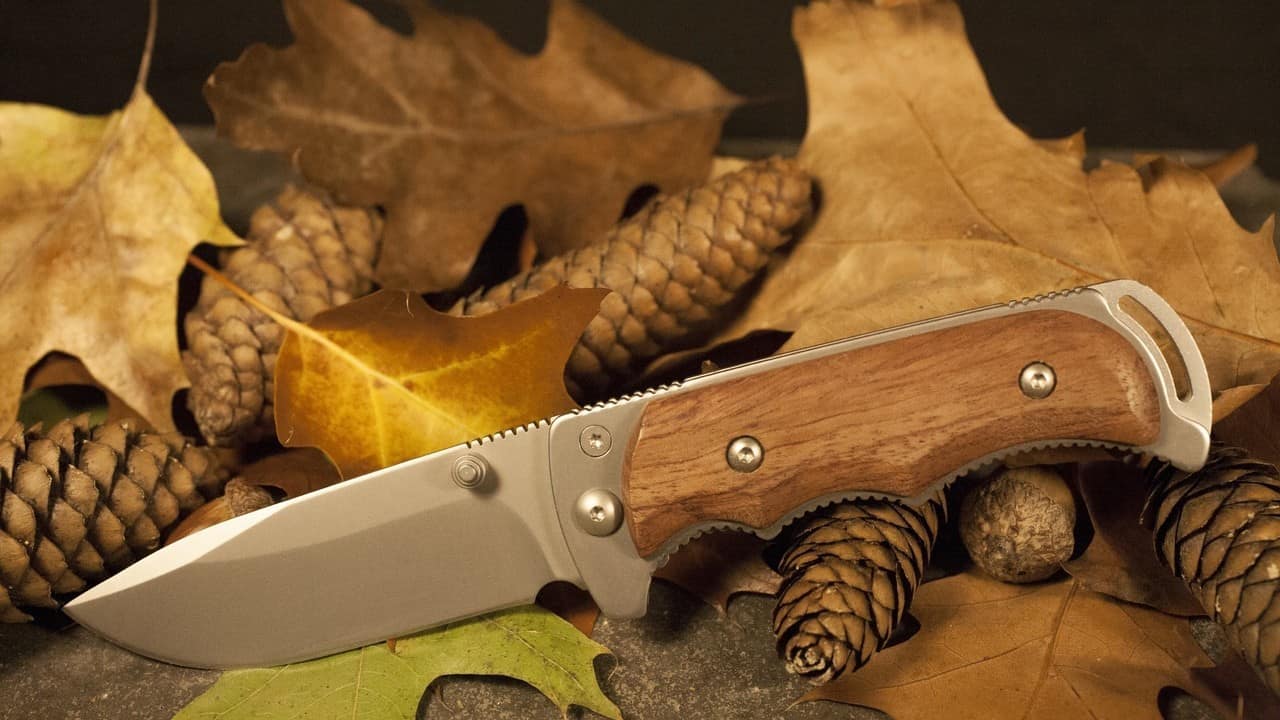When it comes to survival knives, you will find that there is a lot of variety to sift through and choose from. They are available in all kinds of different variations that serve stylistic and aesthetic purposes, but some features also serve a functional purpose.
Avabile Survival Knives Product
You may have, at some point, owned a knife that had multiple little indents on the opposite side of its sharp blade. So what are the serrations in the back of survival knives for? We will explore this phenomenon in this article:
What Are The Serrations In The Back Of Survival Knives?
For those who have never looked into it, people tend to believe that the serrated edge on the spine of a survival knife is simply there for showmanship.
After all, the indents and sharp teeth do make a knife look more lethal and intimidating like the Pocket Panther Blade by BlackFox which is one of the best survival knives for people with small hands. And while they do help elevate the appearance and outlook of a standard survival knife, the serrated edge does, in fact, serve a purpose.
The serrated edge of the knife is typically designated for cutting through tough, cordlike or metal surfaces. Think of its function like a saw- you run the sharp teeth of the serrations back and forth against a hard surface to shave off material and slice through.
Some of the most common applications of the serrated spine of a survival knife include sawing through ropes, cords, and strings. They are much more efficient for these tasks as compared to the regular, plain edge of a knife.
Here is a post that I wrote on the best 5 survival knives with a saw.
You can even use the serrations to cut through thin metal sheets and carcasses, a useful application for which they have been utilized by aircrew. They can also be used to shave wood and bark, although sawing all the way through a piece of wood may be too much for your knife to handle.
The way these serrations work to allow you to make cuts and havings in order, rougher surfaces is based on simple physics. The sharp points and indents increase the surface area and simultaneously increase the pressure per area as well at the sharper edges.
The jagged indentations also get caught in the material of the item that is being cut, allowing you to have a better grip as well as control over the cutting process.
As such, you can use a serrated knife for a variety of versatile purposes and applications which makes it a handy tool to have in survival based situations.
Read here my article on the best survival knives for batoning and wood chopping.
Plain And Serrated- Opting For A Dual Blade
Some people do not like having serrations on the back of their survival knife and would much rather have an equally razor sharp and thin edge on both sides.
This is because the serrations may prevent you from getting clean through cuts. If you are stuck in this kind of a situation where you want both sides to have a plain edge but also require the functionality of a serrated knife, you can go for something called a dual blade.
A dual blade knife is exactly what its name suggests- a survival knife with two blades, one with plain edges, and the other with serrated spines. In this way, you do not have to worry about lacking a serrated edge, compromising on a sharp plain edge, or having to carry two different tools to make it all work.
A dual knife means you will have two blades that can be produced from a single tool. When not using one of the two types of blades, you can stow it away by folding it down into the handle.
However, it is important to understand that since these kinds of knives have a foldable design, they might not be as sturdy and effort bearing as a standard, non-foldable knife. Therefore, you may want to consider another solution if you wish to go beyond simply light work.

